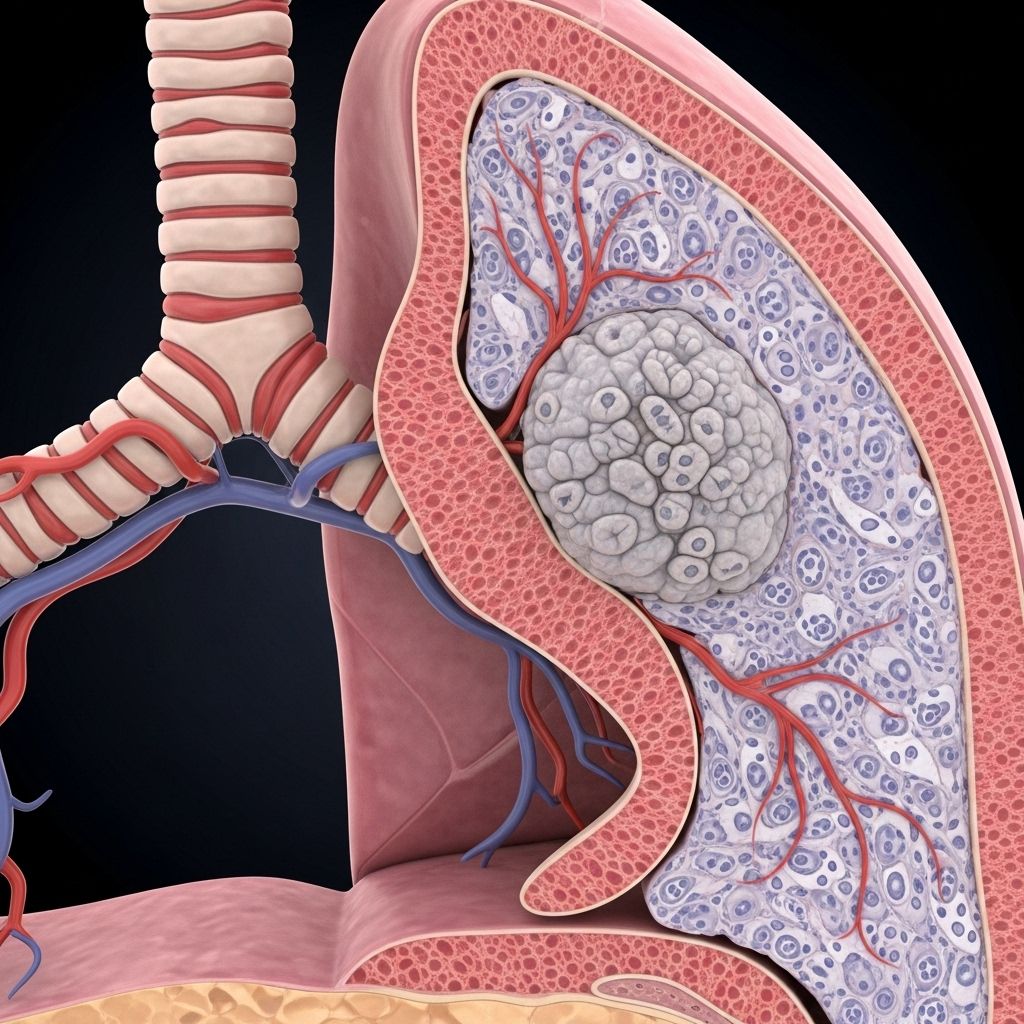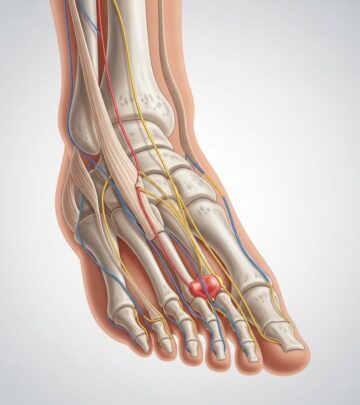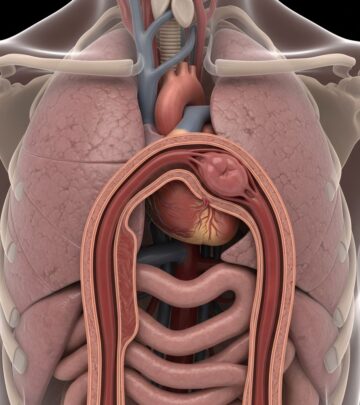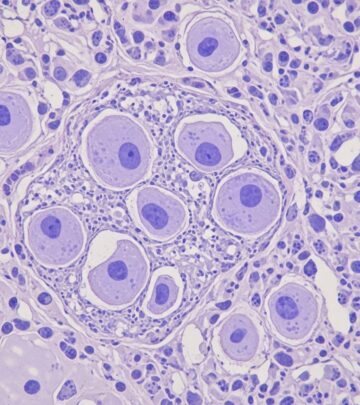Squamous Cell Lung Carcinoma: Symptoms, Stages, Causes, and Treatment
Discover the causes, symptoms, risk factors, and treatment options for squamous cell lung carcinoma, a common type of non-small cell lung cancer.

Squamous Cell Lung Carcinoma Overview
Squamous cell lung carcinoma is a type of non-small cell lung cancer (NSCLC) that begins in the squamous cells lining the bronchi, the main airways into the lungs. It is primarily associated with tobacco smoking and remains among the most common lung cancers seen in smokers, accounting for approximately 25–30% of all lung cancer cases.
This cancer develops when squamous cells undergo genetic changes and grow uncontrollably, often forming tumors that can obstruct airways and spread to nearby tissues and organs.
Symptoms of Squamous Cell Lung Carcinoma
Symptoms often do not appear until the disease has progressed or metastasized, making early detection challenging. When they do emerge, they include:
- Persistent cough
- Coughing up blood (hemoptysis)
- Shortness of breath or wheezing
- Hoarseness
- Chest pain, especially when coughing or taking deep breaths
- Unexplained weight loss
- Decreased appetite
- Fatigue
- Recurring lung infections (such as pneumonia or bronchitis)
In more advanced stages, as the cancer spreads (metastasizes), additional symptoms may occur:
- Swollen lymph nodes
- Dizziness or headache
- Feelings of weakness or numbness in the limbs
- Bone pain
- Seizures
Symptoms such as coughing up blood can sometimes present at an earlier stage compared to other lung cancers, especially if tumors originate in the center of the lungs.
Causes and Risk Factors
The leading causes and risk factors for squamous cell lung carcinoma include:
- Smoking: The most significant risk, with smokers being up to ten times more likely to develop lung cancer than non-smokers. The longer and more intensely someone smokes, the higher the risk. This includes cigarettes, cigars, and pipes.
- Radon Exposure: Radon is a colorless, odorless, radioactive gas produced from rocks and soil. It is the second leading cause of lung cancer and the most common for non-smokers. Risk increases when smoking is combined with radon exposure.
- Secondhand Smoke: Exposure to smoke from others’ tobacco products elevates risk.
- Occupational Hazards: Long-term exposure to cancer-causing substances such as asbestos, arsenic, chromium, nickel, and certain petroleum products commonly occurs in workplace environments.
- Air Pollution: Poor air quality can increase the risk, especially in urban areas or workplaces with airborne contaminants.
- Radiation Exposure: Prior chest radiation therapy or excessive exposure to imaging procedures increases the risk.
- Personal or Family Medical History: Previous lung cancer or a close relative with lung cancer raises susceptibility.
Non-smokers may rarely develop squamous cell carcinoma, but combined environmental and occupational exposures can contribute.
How Fast Does Squamous Cell Lung Carcinoma Spread?
Squamous cell lung carcinoma, as a subtype of NSCLC, generally grows and spreads slower than small cell lung cancer. However, the rate of growth varies based on tumor biology, smoking history, and the stage of cancer at diagnosis. Tumor doubling time and growth rate are used to estimate how rapidly the cancer progresses.
Metastasis, or the spread of cancer to other organs, happens in an estimated 40% of NSCLC cases by the time of diagnosis. The most common sites for metastatic spread include:
- Liver
- Brain
- Adrenal glands
- Bone
When cancer is metastatic, symptoms vary depending on the affected organs (such as bone pain, headaches, or neurological deficits).
Stages of Squamous Cell Lung Carcinoma
Staging describes how far the cancer has spread and helps determine prognosis and treatment options. The key stages include:
| Stage | Description |
|---|---|
| Stage 0 | Cancer is confined to the top lining of the lung and has not spread outside. |
| Stage I (IA & IB) | Cancer is located within the lung and has not spread to lymph nodes; sub-staged by tumor size. |
| Stage II (IIA & IIB) | Cancer is larger and may have spread to nearby lymph nodes or tissues but not distant organs. |
| Stage III (IIIA, IIIB, IIIC) | Cancer may be difficult to remove via surgery; has spread locally but not to distant organs. |
| Stage IV | Cancer has metastasized to other areas outside the lungs (distant organs). |
Diagnosis and Testing
Early diagnosis improves outcomes, but many cases are identified after the cancer has advanced. Common diagnostic steps include:
- Review of medical history and symptoms
- Physical examination
- Imaging scans (chest X-ray, CT scan, PET scan)
- Sputum cytology (examining mucus from coughing for cancer cells)
- Bronchoscopy (visual examination of airways; possible biopsy)
- Needle biopsy or other tissue sampling to confirm diagnosis
- Molecular and genetic testing to identify tumor characteristics
Staging involves additional scans and possibly lymph node biopsies to determine how far the cancer has spread.
Treatment Options
Treatment depends on the stage at diagnosis, overall health, and personal preferences. Common approaches include:
Surgery
Primary option for early-stage cancer, especially when the tumor is localized and operable. Surgical procedures may remove part or all of the affected lung tissue.
Radiation Therapy
Uses high-energy rays to destroy cancer cells, often employed for patients unable to undergo surgery, for inoperable tumors, or as an adjunct to other therapies.
Chemotherapy
Drugs are administered intravenously or orally to kill cancer cells or shrink tumors. Chemotherapy may be used before surgery (neoadjuvant), after (adjuvant), or for advanced/metastatic cancer.
Targeted Therapy
Certain medications target specific molecules involved in cancer growth. Not all squamous cell carcinomas are suitable for targeted therapies, but testing can identify candidates.
Immunotherapy
Newer drugs stimulate the body’s own immune system to attack cancer cells; useful for certain advanced stages.
Supportive (Palliative) Care
Focuses on symptom relief and quality of life improvement for advanced cases who may not benefit from aggressive treatment.
Prognosis and Survival Rates
Outcomes depend on the stage at diagnosis, tumor genetics, patient health, and response to treatment. Survival rates decrease with advancing stages. Early-stage detection offers the best chance for cure; metastatic disease is rarely curable but may be managed with combined therapies. Regular follow-up is essential for monitoring recurrence or progression.
Prevention Strategies
- Quit smoking or avoid tobacco in any form
- Test and mitigate radon levels in homes
- Limit occupational exposure to carcinogens with protective measures
- Improve indoor air quality and minimize air pollution exposure
- Maintain regular health check-ups, especially with family history
Frequently Asked Questions (FAQs)
What is squamous cell lung carcinoma?
It is a type of non-small cell lung cancer that starts in the squamous cells lining the bronchi and is closely associated with smoking.
Can you have lung cancer without symptoms?
Yes. Many cases produce no noticeable symptoms until later stages or after cancer has spread, highlighting the importance of screening and medical evaluation.
How is squamous cell lung carcinoma diagnosed?
Diagnosis involves imaging (chest X-ray, CT scan), sputum cytology, bronchoscopy, and biopsy, followed by staging investigations.
What are the main treatment options?
Surgery, radiation, chemotherapy, targeted therapy, immunotherapy, and palliative care are common approaches tailored to stage and patient health.
Is quitting smoking helpful after diagnosis?
Yes. Stopping smoking may slow disease progression, improve treatment efficacy, and reduce additional health risks.
What is the outlook for people with squamous cell lung carcinoma?
Outlook depends on the cancer stage, treatment response, and overall health. Early diagnosis and treatment yield the best outcomes.
Key Takeaways
- Squamous cell lung carcinoma is a prevalent and aggressive NSCLC subtype, most often seen in smokers.
- Symptoms frequently appear only after significant progression, making screening and prompt medical attention essential.
- Identifying risk factors and minimizing exposures can reduce chances of developing the cancer.
- Several treatment options are available, and survival rates depend largely on stage and patient condition.
References
- https://www.lungcancergroup.com/lung-cancer/non-small-cell-lung-cancer/squamous-cell-carcinoma/
- https://www.healthline.com/health/lung-cancer/squamous-cell-lung-carcinoma
- https://lcfamerica.org/about-lung-cancer/diagnosis/types/squamous-cell-carcinomas/
- https://www.health.harvard.edu/cancer/squamous-cell-carcinoma-of-the-lung-a-to-z
- https://www.mdanderson.org/cancerwise/5-things-to-know-about-squamous-cell-carcinoma-of-the-lungs.h00-159618645.html
- https://www.mayoclinic.org/diseases-conditions/lung-cancer/symptoms-causes/syc-20374620
- https://www.lungevity.org/lung-cancer-basics/types-of-lung-cancer/squamous-cell-lung-cancer
- https://my.clevelandclinic.org/health/diseases/4375-lung-cancer
- https://www.brownhealth.org/centers-services/thoracic-cancer-center/lung-cancer-symptoms-and-causes
Read full bio of medha deb












